
Agia Fotia
Minoan Settlement and Cemetery
Agia Fotia or
Αγιά
Φωτιά
is a village on the road to Palaikastro,
only 5 kilometers from the center of Sitia.
Νεκρόπολη
Αγιά
Φωτιά
or the Agia Fotia Minoan cemetery
overlooks the sea nearby.
Much more prominent are the remains of a large structure.
A network of small roads link the village to the Minoan site
through agricultural fields.
This could be confusing, as there is a popular
Agia Fotia beach on the south coast,
10 kilometers east of Ierapetra.
Here's the view out the windshield while heading through the fields from the main road to the site.
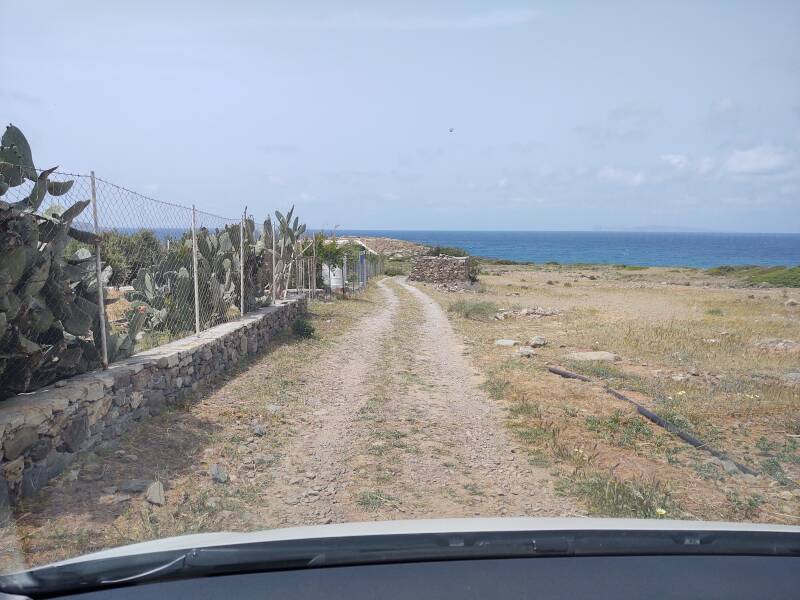
A sign at the site shows modern Sitia, scant remains of a Hellenistic town at Trypitos, Late neolithic remains at Kephala, and EM I–IIA and MM IIA–IIB at Petras and here at Agia Fotia.
The settlement and cemetery here date from Early Minoan I–IIA, so 3000–2400 BCE. The later Middle Minoan components here, from at least 550 years later, were fairly minor — two tholos tombs and a few farmhouses.

Signs and Google Maps will direct you to the site, describing it as a Minoan cemetery. However, while there's very little sign of the cemetery today, remains of a large Minoan structure are obvious.

It was a large rectangular building, 18 by 27.5 meters, dating from the MM IA period of 2800–2400 BCE. The walls were built from medium sized stones held together with mud mortar, so only the bottom half-meter or so of the walls has survived.
Looking east along the coast, you can see a hotel at far right, about 350 meters away. Another beach resort had been under construction, past that short point and about 1.6 kilometers away, but it looked as if construction had been halted for some time.
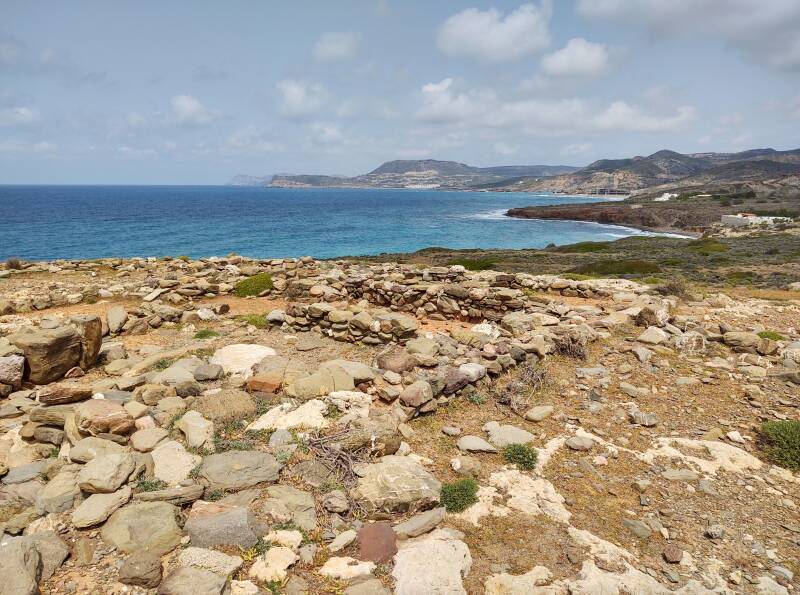
The structure has 37 rooms that open onto a central court but don't necessarily connect to each other. Small groups of rooms connect to each other and the central courtyard, leading to a theory that it was occupied by a small number of families, maybe a clan.
The structure is large, but it wouldn't be classified as a palace because there is no sign of a "palace economy" supporting and controlling the surrounding territory. There are signs that some rooms were used for processing cereals. But there are no storage areas, and only few sherds of pithoi, large storage jars used for oil, grain, and other bulk goods. One viewpoint is that "Storage is about controlling the future, and thus authority." They weren't doing that here.
Sitia is visible across the bay. Ferries connect during the high season to the northeast to Karpathos, Kasos, Halki, and Rhodes; to the east to Agios Nicholaos and Heraklion; and to the northeast to Anafi, Thera (Santorini), Milos, and Piraeus.
I was in Sitia the last few days of April and the first few days of May, and I didn't see any ferries arrive or depart.
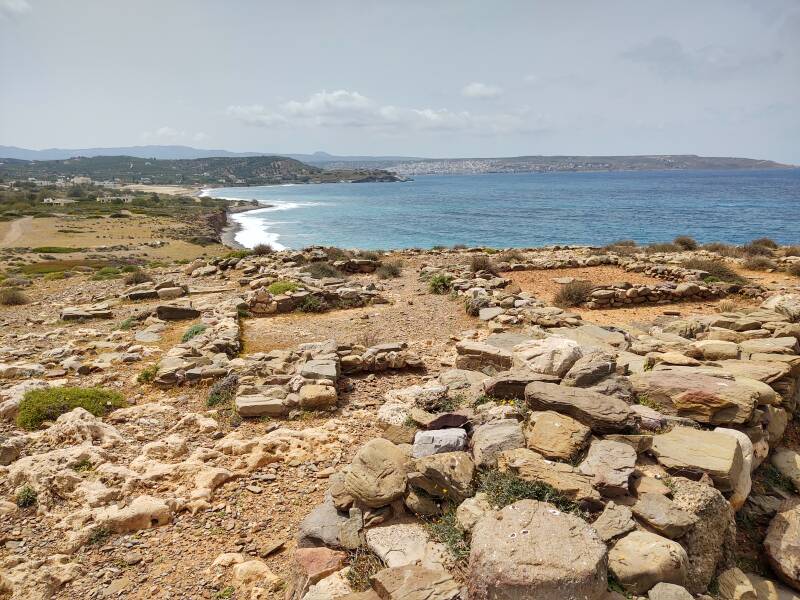
The structure was surrounded by a fortification wall. That is very unusual. Most Minoan settlements have no sign of fortifications, guards, or other physical security.
The building was not occupied for long. But it doesn't seem to have been subjected to an attack that drove the inhabitants away.
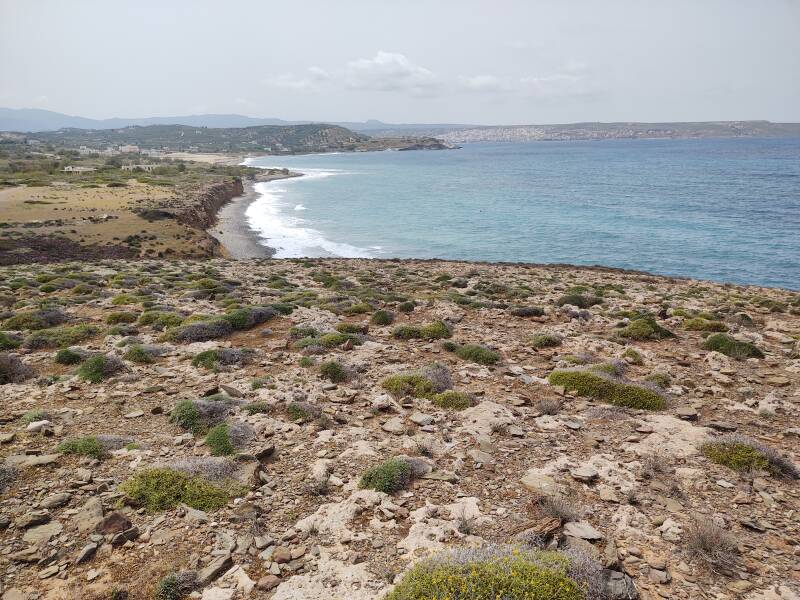
The structure was built on an uneven rock surface. They built the floors with compacted earth to level out the irregular stone base.
Researchers found a bronze axe outside this complex. It was of a design known from the Early Bronze Age, thought to have originated in mainland Greece and then been taken to the Cycladic islands.

A large cemetery was about 150 meters to the east along the coastline, the direction we're looking in the below picture.
There were over 250 Minoan tombs here, it was the largest Minoan cemetery found so far. Some of them were simple pit tombs, but the majority were an early form of chamber tomb with a roughly elliptical shape and vestibule.
It seems that the cemetery was entirely excavated away in 1984–1985 because there were plans to build a hotel on the site.

The burial vessels had incised decoration, indicating a Cycladic influence.
The large collection of obsidian blades probably indicate trade links up into the Cycladic islands and west to Milos, a major source of the obsidian found around the Aegean. Or, it's possible that this was a Cycladic colony.
Lead amulets have been found here. Apparently the Minoans considered lead to be a precious metal of value similar to silver.
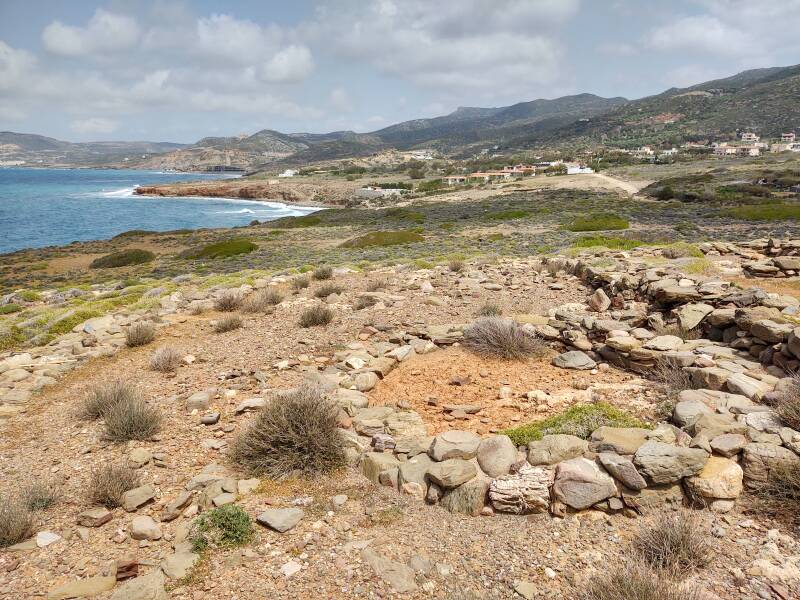
The modern village of Agia Fotia has 260–300 inhabitants. Caves up the mountain slopes beyond it were found to contain objects from the Pre-Palatial stage of Minoan occupation, and from the Neolithic before that.
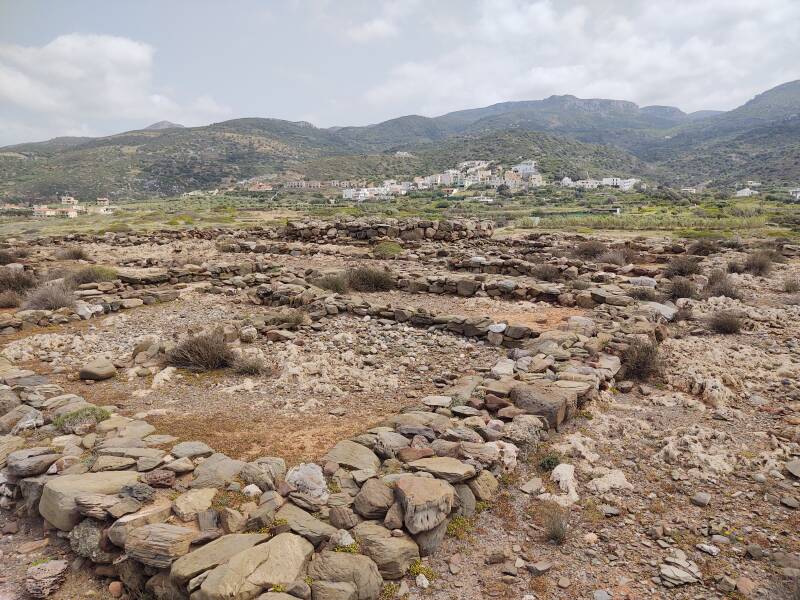
I returned to the main road by a slightly different path through the farm fields.
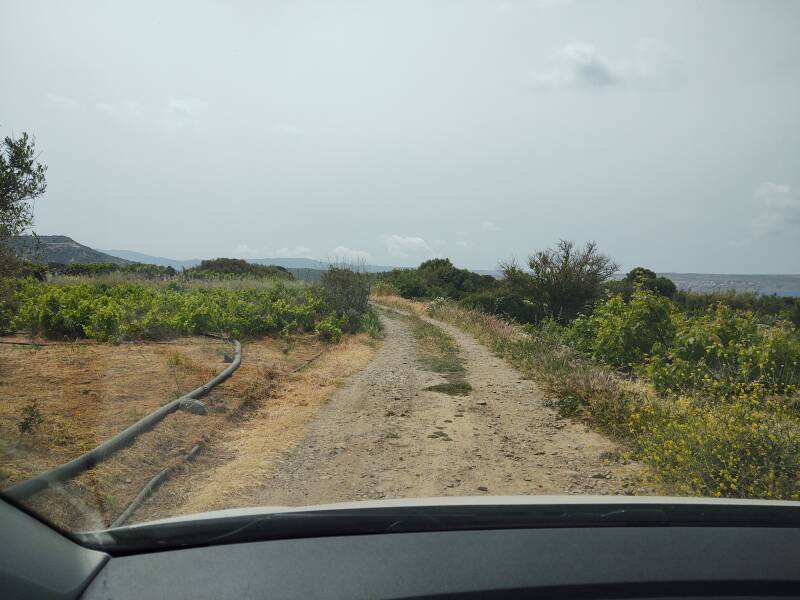
The lanes are just two tracks with thick grass growing up in the middle and shrubbery encroaching from both sides.
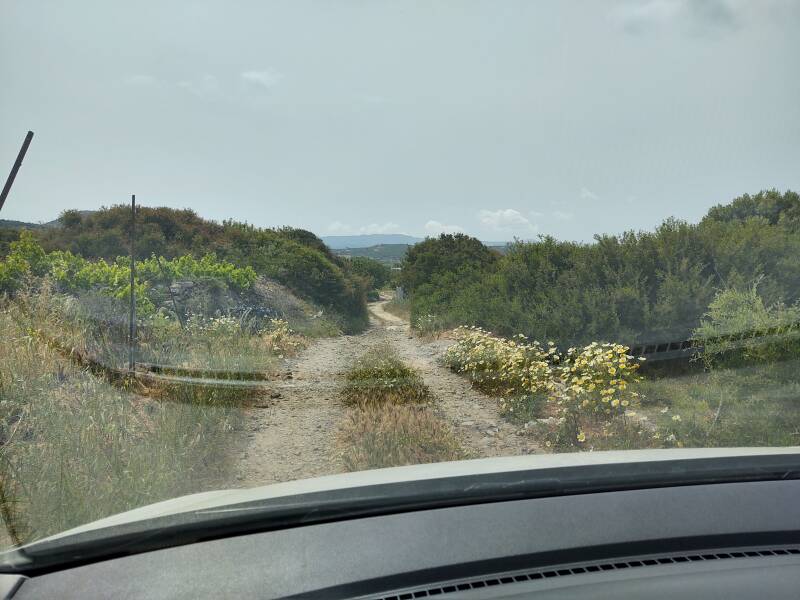


Next❯ Aegean coast road from Sitia to Agios Nikolaos
Or, Continue Through Greece:
Where next?